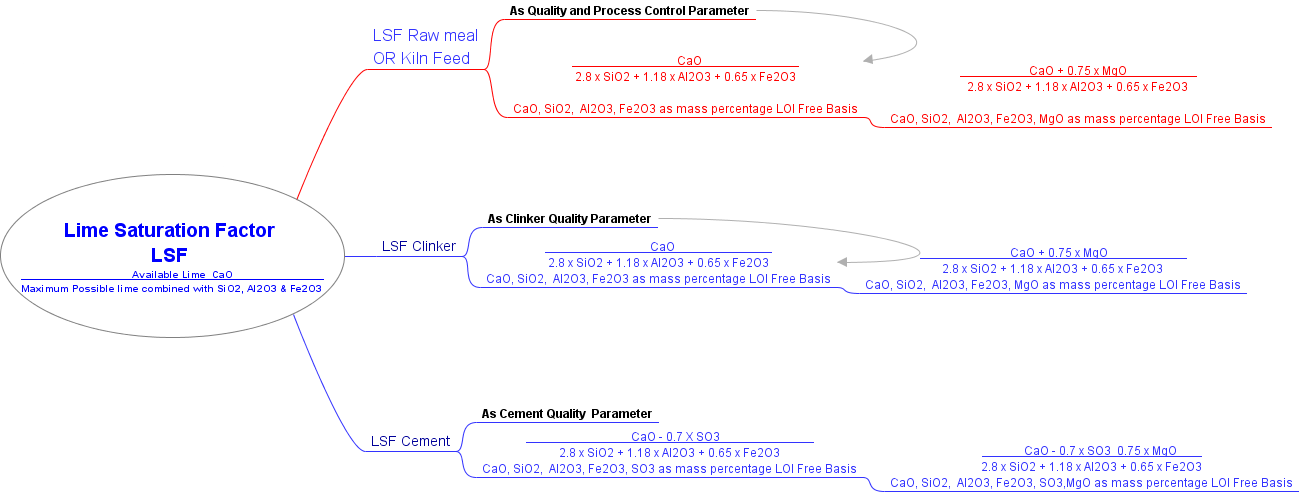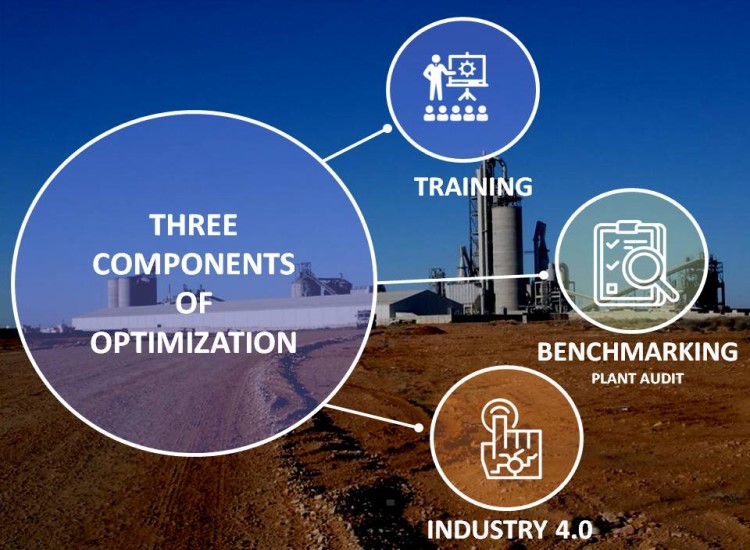Lime Saturation Factor LSF
Lime Saturation Factor (LSF) is the ratio of the actual amount of lime in raw meal/clinker to the theoretical lime required by the major oxides (SiO2, Al2O3 and Fe2O3) in the raw mix or clinker. It is practically impossible to complete the reaction to 100%, in a reactor like rotary kiln, therefore there will always be some unreacted lime (CaOf) known as free lime. The amount of free lime in clinker indicates incomplete burning and needs to be monitored. When coal is used as fuel, the ash content and its composition should be considered in raw mix design. LSF of clinker lies in the range of 92-98. Higher LSF at controlled free lime content translates to better quality of clinker (high C3S), difficult clinkerization, high heat consumption.
SignUp Here

Silica Modulus (SM) is the ratio of content of oxides of silica to the oxides of alumina and iron. SM signifies the ratio of solid content to the melt content. Therefore, when SM is too high, nodulization becomes weak and clinkerization reaction (C3S formation) rate slows down, kiln becomes dusty and difficult to operate. While as when SM is too low, more melt is formed in kiln, issues like thick kiln coating, kiln melting, snowman formation in cooler are more prone. Normal range of SM is 2.3-2.7.
Alumina Modulus (AM) is the ratio of content alumina oxide to iron oxide. AM signifies the temperature at which liquid formation starts, the nature of liquid formed and the color of clinker formed. The lowest temperature is obtained at AM equal to 1.6, which is the optimum for clinker formation and nodulization. Higher the AM, lighter the color of clinker (cement). Normal range of SM is 1-2.5.
*****THANKS A LOT, HOPE THIS TOPIC WAS INFORMATIVE AND USEFUL FOR YOU, DROP A COMMENT ABOUT THIS STUFF*******
Go ahead for Cement Plant Optimization Grand offer...
We have collaboration with technology leaders like LEAN AUTOMATION for Industry 4.0 to facilitate three pillars for cement plant optimization at one window. Technology is a great enabler for optimization, But we need to update continuously the knowledge and skill set of front line action takers through capacity development training. So that the cultural transformation will take place to embrace newer possibilities and overcome skepticism.
THREE COMPONENTS TOGETHER WILL GUARANTEE YOUR CEMENT PLANT OPTIMIZATION
- Training will enable people to identify and differentiate wastage and value addition.
- Regular plant operation audit/analysis will highlight the pain points, performance gaps, bottlenecks and potential optimization opportunities in plant operation and design.
- Incorporation of process information management system PIMS will bridge various data islands like Quality, Production, Maintenance etc. and collect them on one page and thereby facilitate a tool to action takers to take decisions on real time data/facts. Moreover it will provide you 360 degree visualization of plant shop floor facts anywhere and anytime, so that you are 100 % aware about things happening at your manufacturing unit and initiate corrective action immediately if anything goes wrong anywhere in plant.
*****THANKS A LOT, PLEASE SHARE YOUR OPINION ABOUT THIS ARTICLE IN COMMENT*******


बहुत ही महत्वपूर्ण जानकारी है l
Thanks for your comments
Thanks
Informative topic
I appreciate it
useful information, thanks